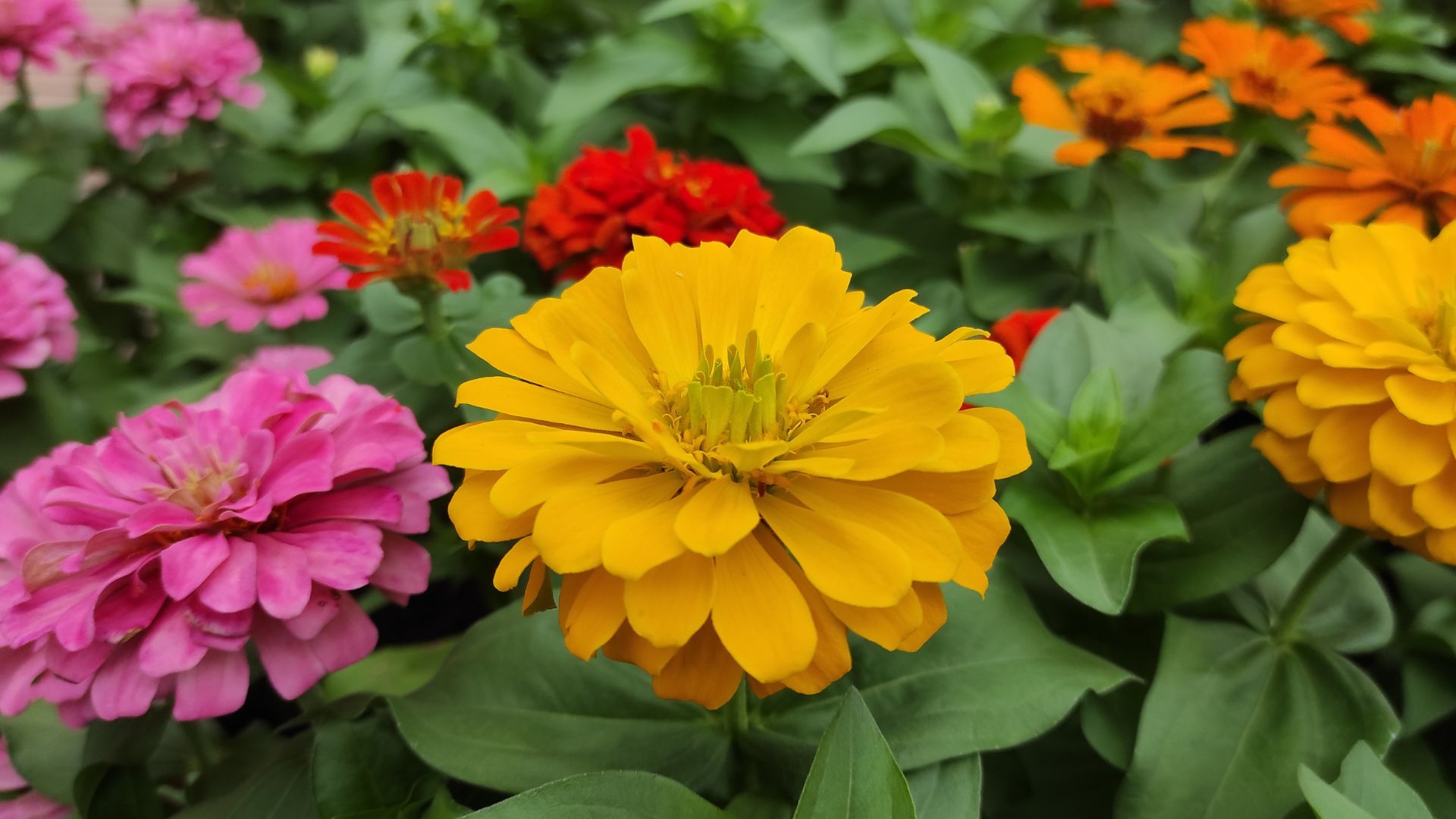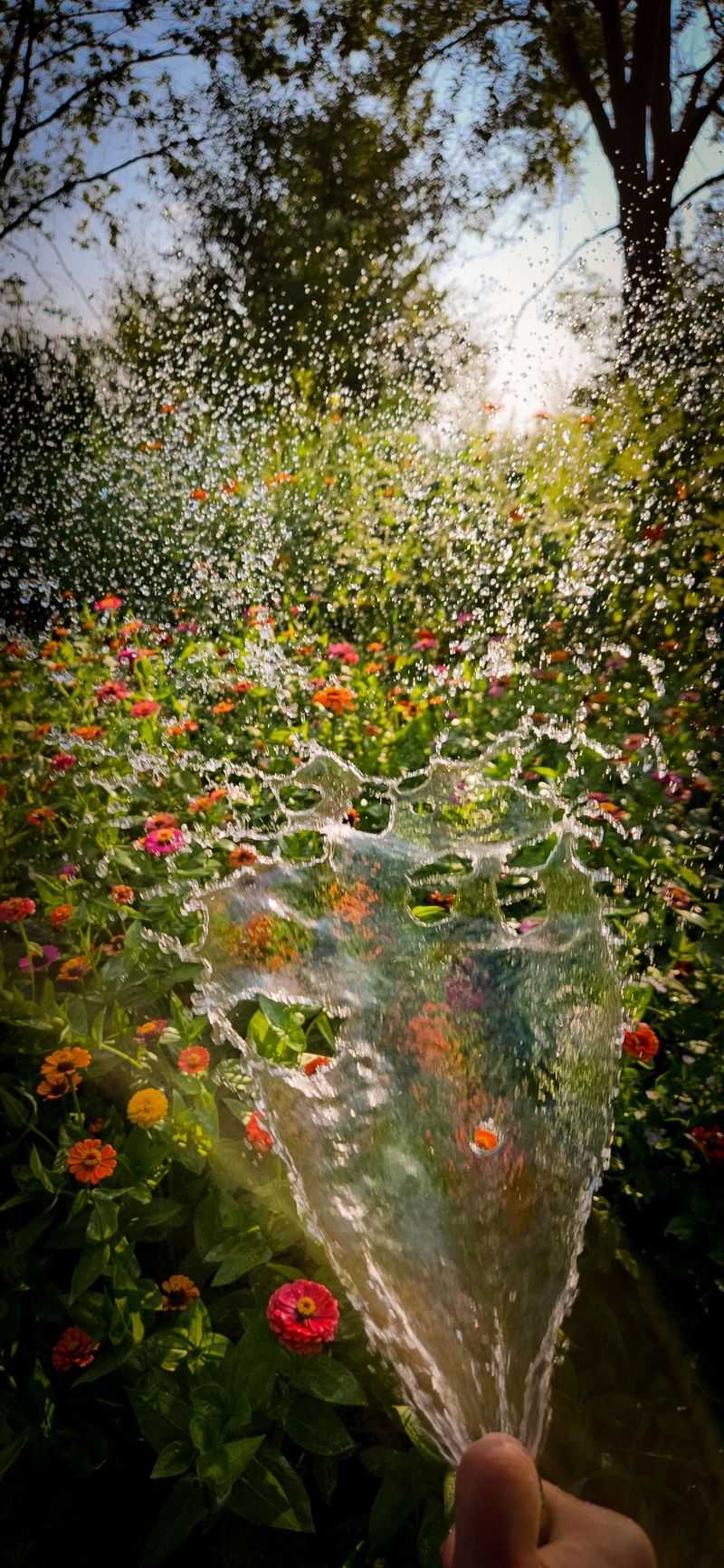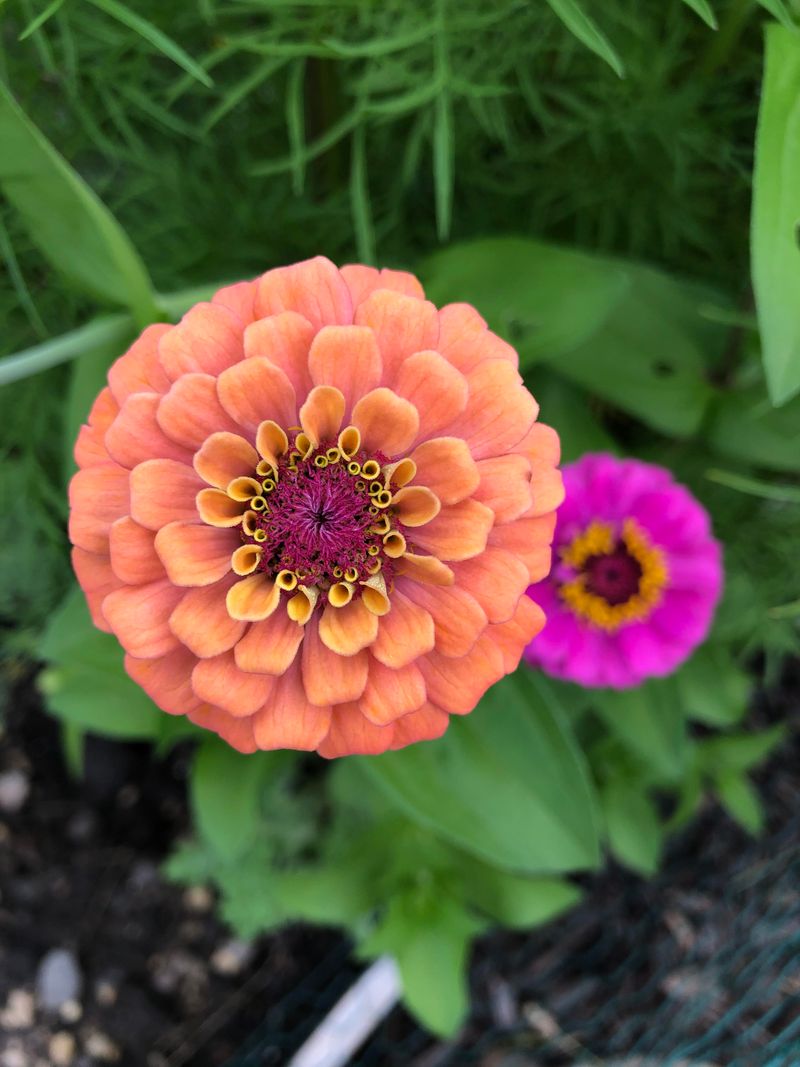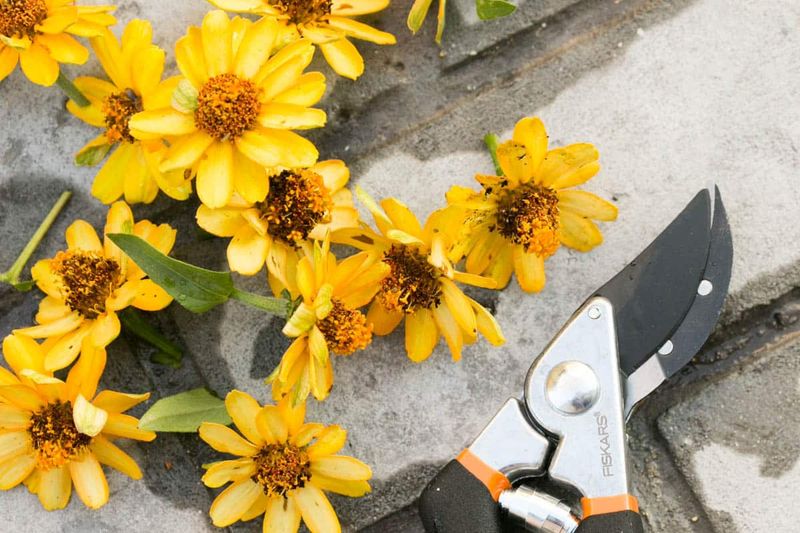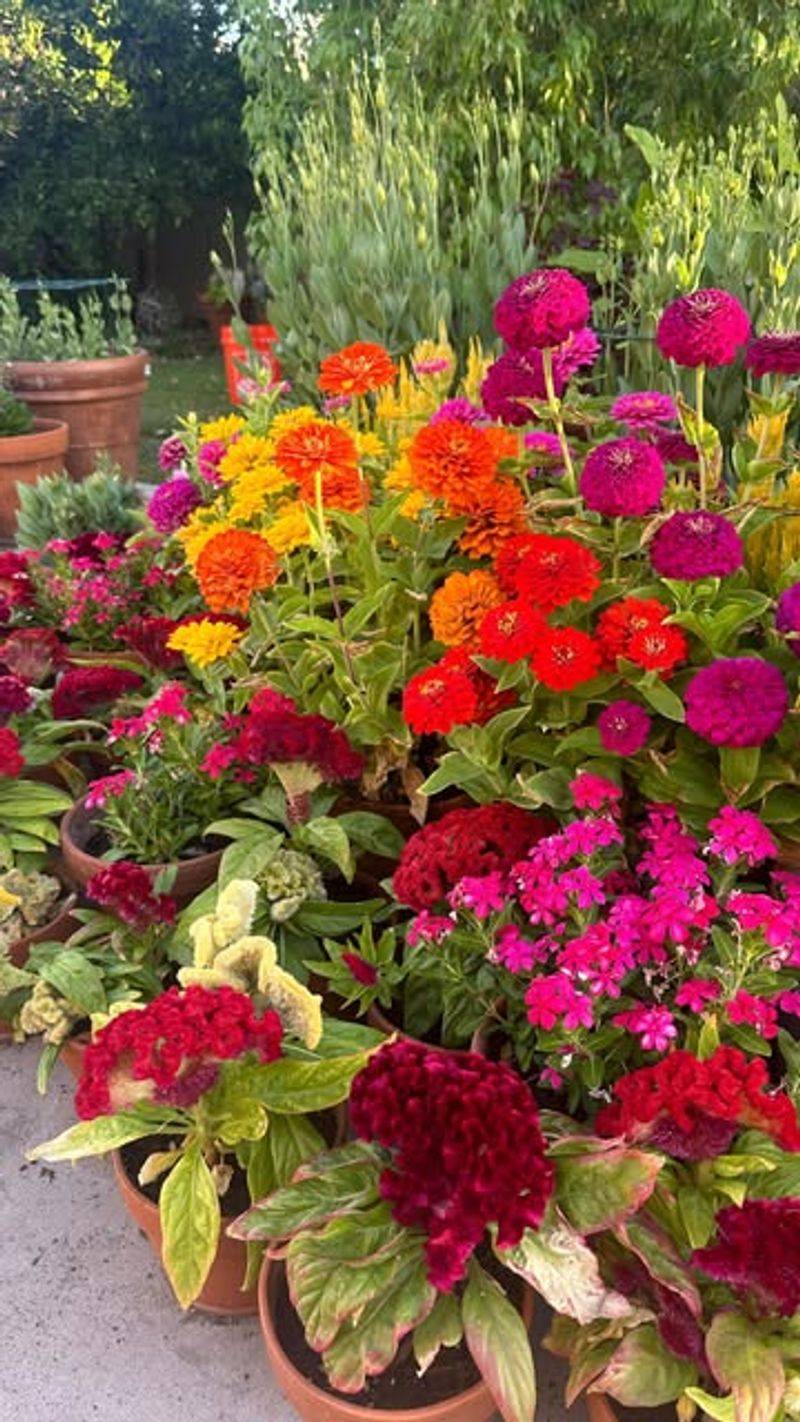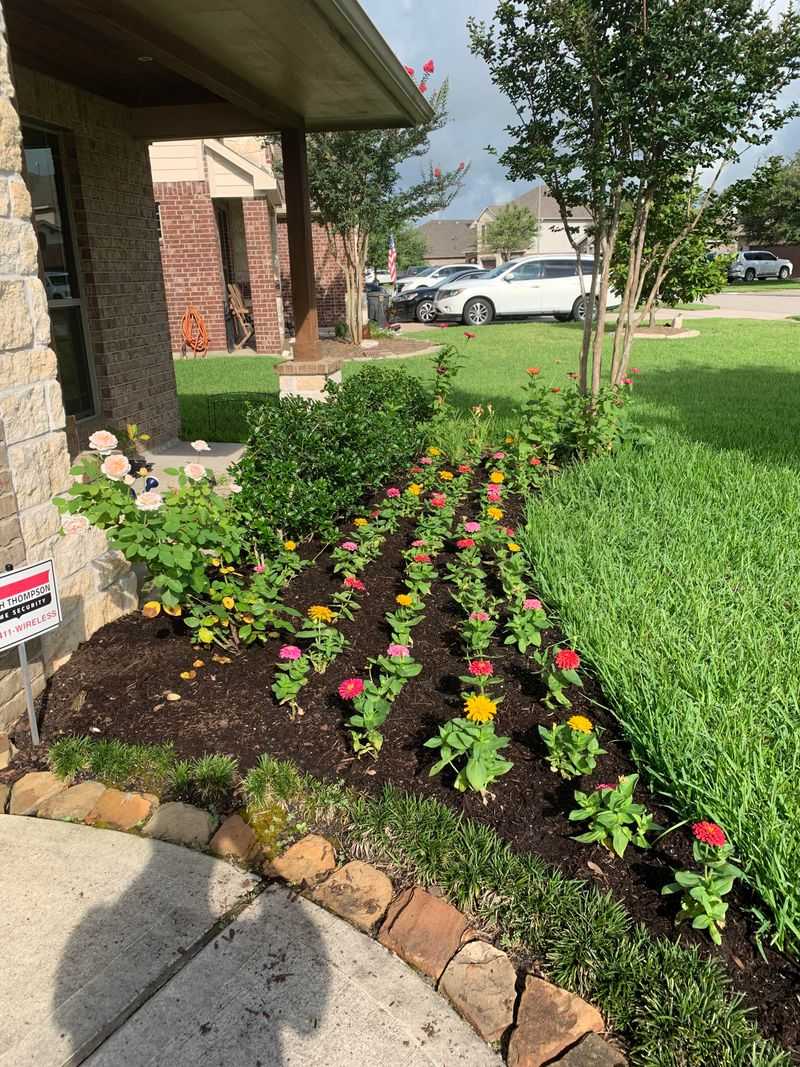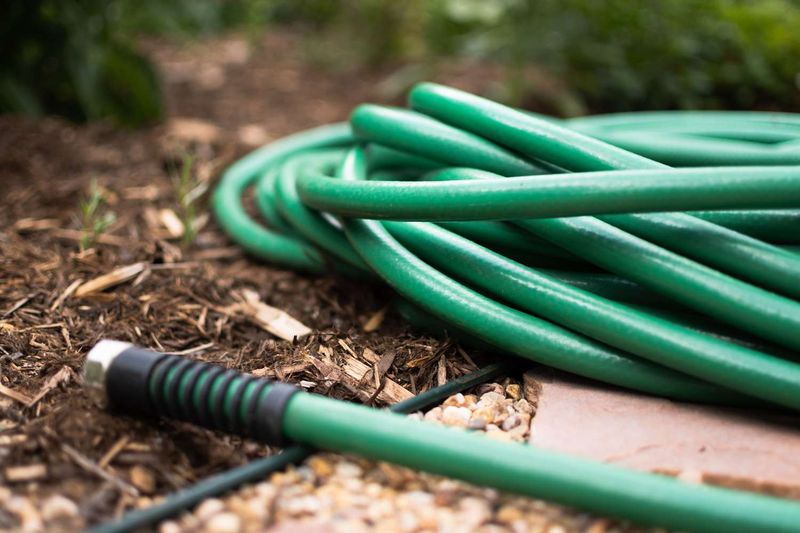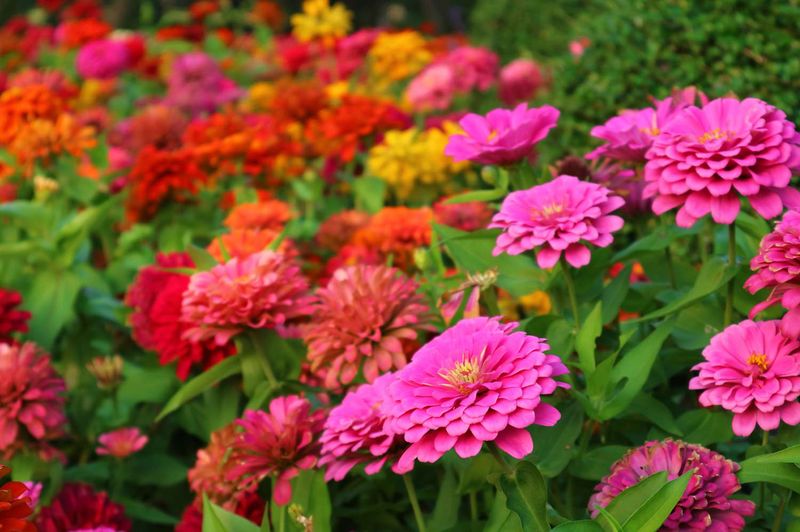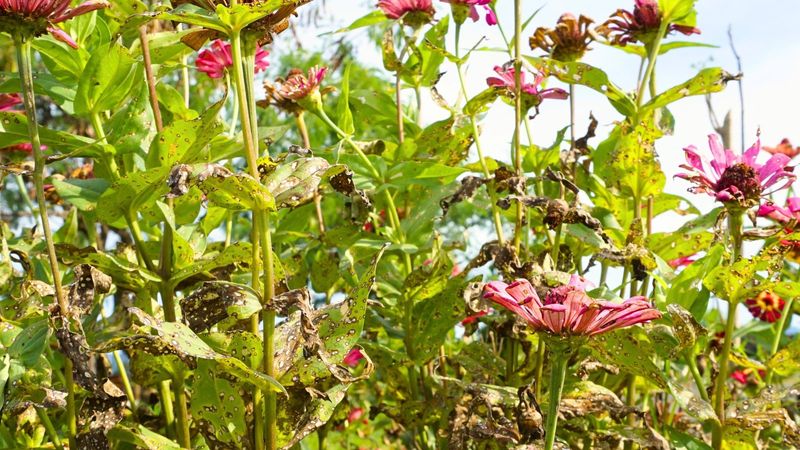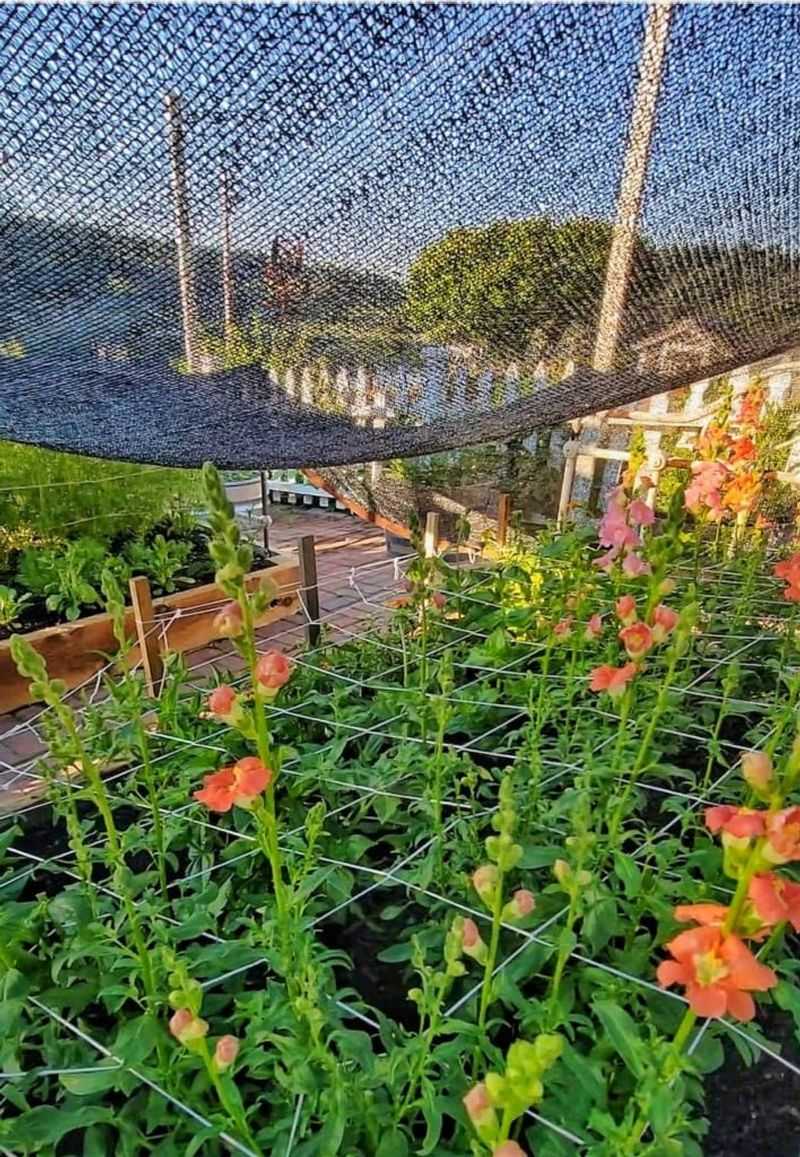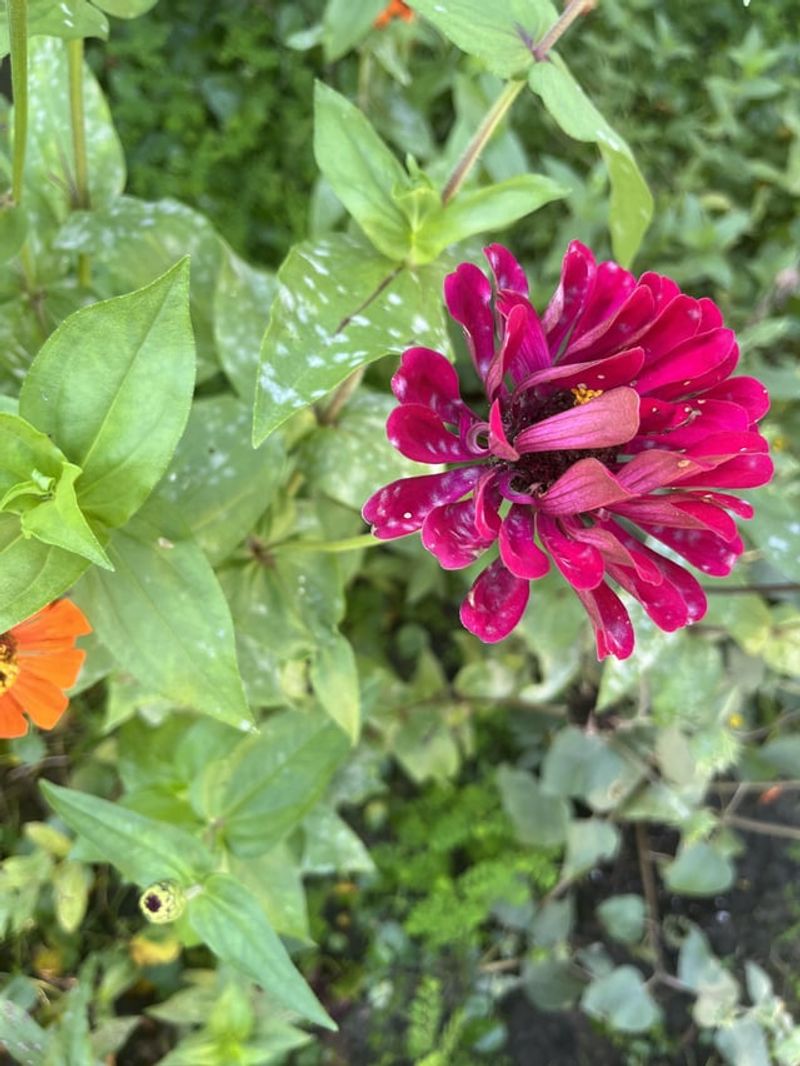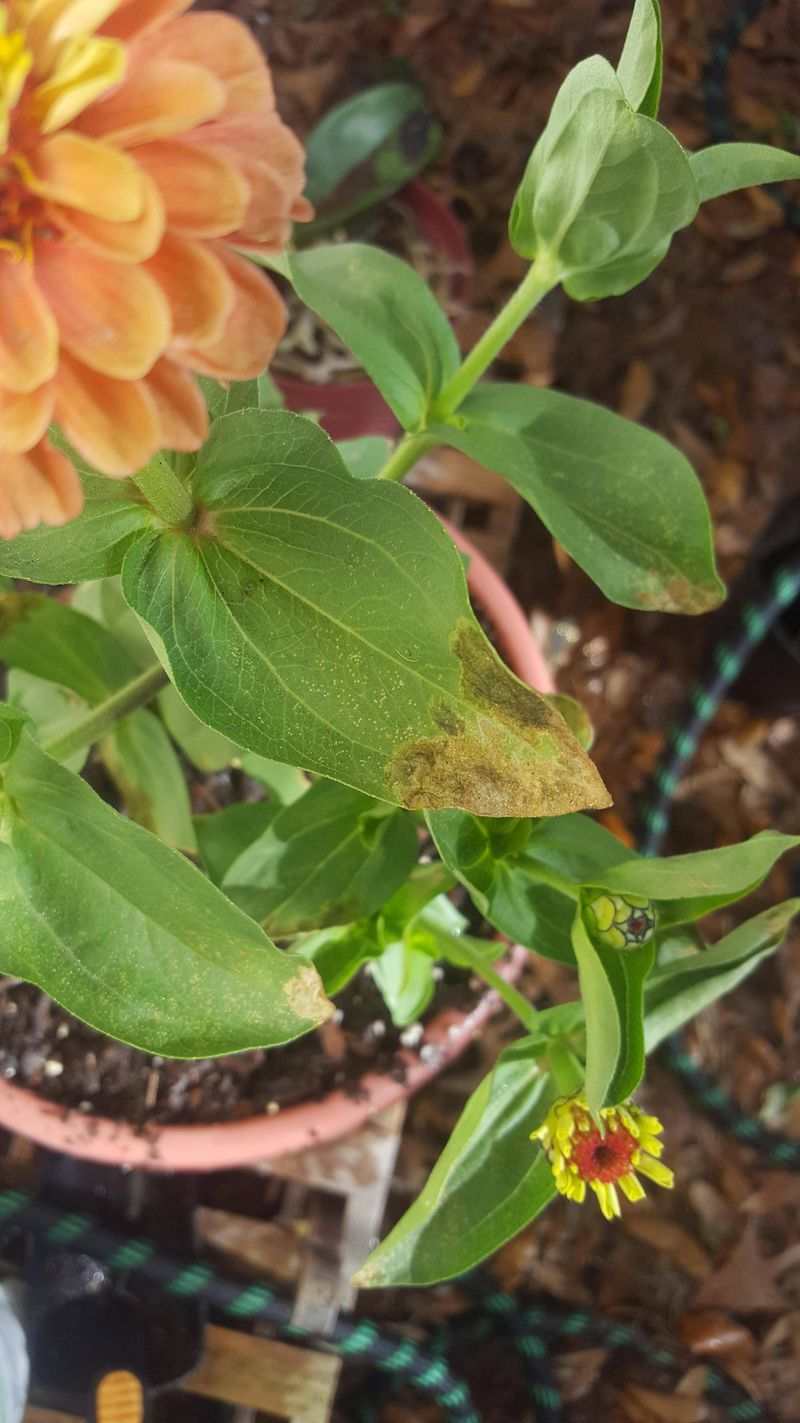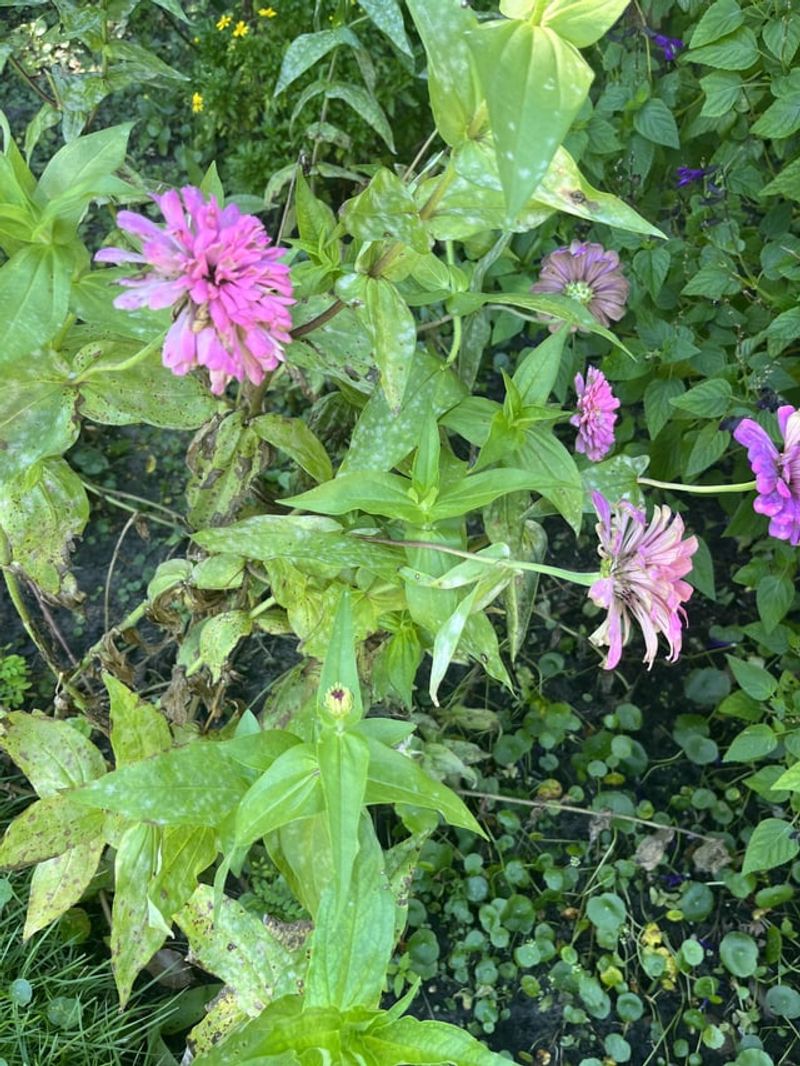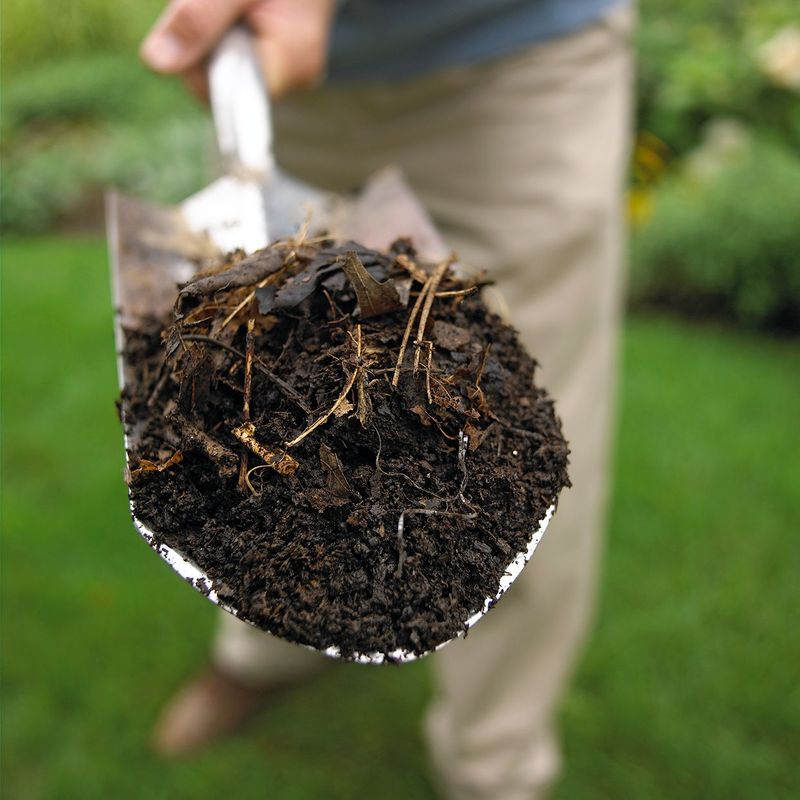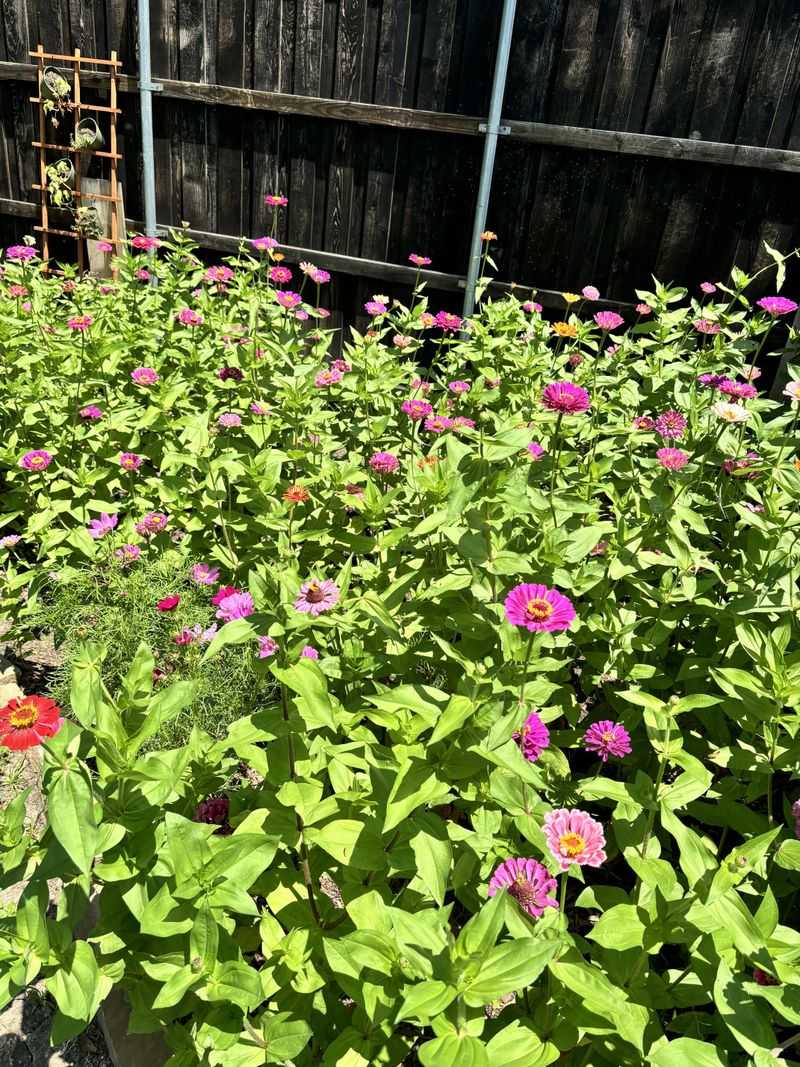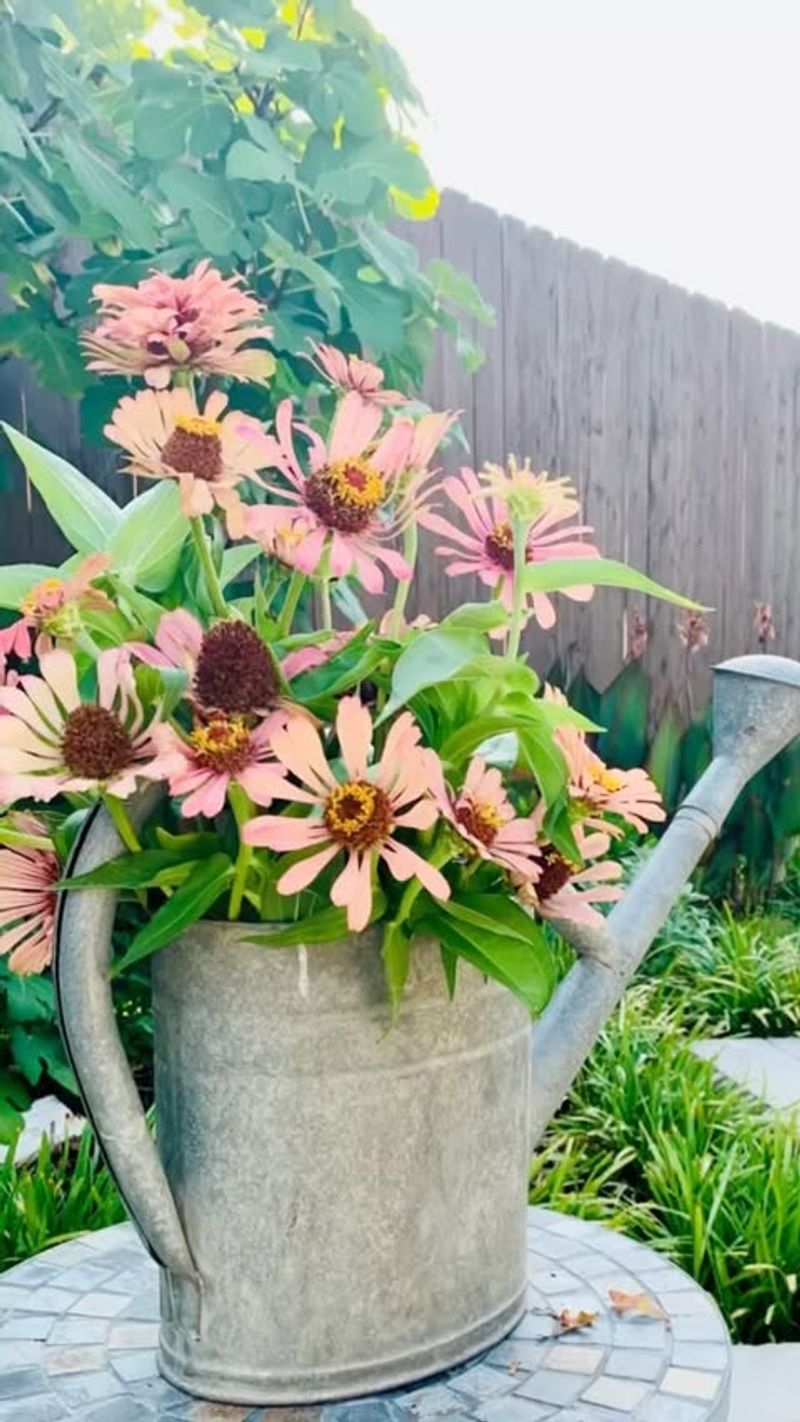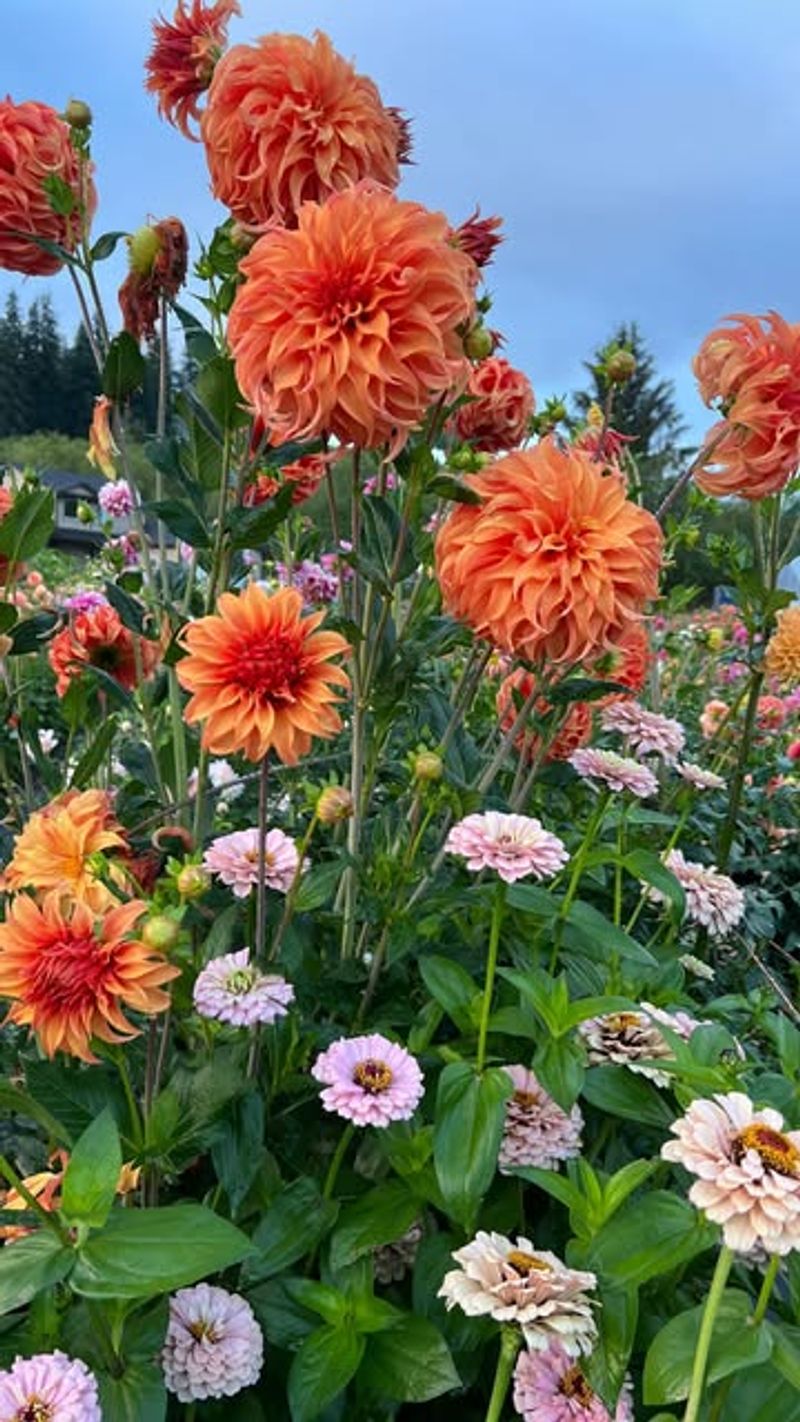Zinnias are summer superstars—easy to grow, bursting with color, and quick to bring joy to your garden. But once mid-July hits and the heat cranks up, even these resilient flowers can start to show signs of stress.
Wilting leaves, fading blooms, and random spotting often mean your zinnias are begging for a bit more TLC. Overcrowding, inconsistent watering, or too much humidity can all lead to trouble, especially during peak summer scorch.
To keep them thriving, space them well for airflow, water deeply in the early morning, and remove faded flowers to encourage new blooms. A few mindful tweaks go a long way toward keeping the color show going strong all season.
1. Shallow Watering Habits
Many gardeners sprinkle their zinnias daily with just enough water to wet the surface. This trains roots to stay shallow where they quickly dry out in July heat.
Instead, water deeply once or twice weekly, allowing moisture to penetrate 6-8 inches down. This encourages deep root growth that withstands hot weather better.
I’ve found that placing my finger an inch into the soil is the best test – if it’s dry there, it’s time to water thoroughly, not just sprinkle the surface.
2. Overcrowded Plantings
Those seed packets make it tempting to plant zinnias close together for maximum color. By mid-July, this crowding creates a perfect environment for powdery mildew and poor air circulation.
Space plants 8-12 inches apart when planting or thin seedlings ruthlessly. For established beds that are too dense, remove every other plant to improve airflow.
Last summer, removing three plants from my overcrowded bed saved the remaining zinnias from disease and produced bigger blooms than ever.
3. Forgetting To Deadhead
Spent zinnia flowers quickly form seeds, signaling the plant to slow down bloom production. By mid-July, many gardeners have grown tired of regular deadheading, not realizing its importance.
Remove faded flowers every 2-3 days, cutting stems back to the first set of healthy leaves. This simple step tricks the plant into producing more blooms instead of seeds.
When I started keeping pruners near the garden door as a reminder, my deadheading consistency improved and my zinnias kept flowering weeks longer than before.
4. Midday Watering Mistakes
Watering zinnias during the hottest part of the day wastes water through evaporation and can actually shock plants. Water droplets on leaves act like tiny magnifying glasses, potentially burning foliage in intense sun.
Schedule watering for early morning before 9 AM when temperatures are cooler. This gives plants time to absorb moisture before the day heats up.
After switching to morning watering, I noticed my zinnias looked less stressed during afternoon heat and developed fewer leaf spots overall.
5. Ignoring Mulch Needs
Bare soil around zinnias heats up dramatically in July sun, stressing roots and increasing water evaporation. The exposed soil surface can reach temperatures over 100°F on sunny days.
Apply 2-3 inches of organic mulch like straw, shredded leaves, or pine needles around plants, keeping it an inch away from stems. This insulates roots and maintains more consistent soil moisture.
Adding mulch to my zinnia beds reduced my watering frequency by half during last year’s July heat wave.
6. Overhead Sprinkler Use
Sprinklers seem convenient but wet foliage creates perfect conditions for fungal diseases that thrive in mid-July humidity. Water droplets sitting on leaves overnight almost guarantee powdery mildew problems.
Switch to soaker hoses or drip irrigation that delivers water directly to the soil. If you must use sprinklers, run them early in the morning so leaves dry completely before evening.
My neighbor’s zinnias always suffered from mildew while mine stayed healthy – the only difference was my $20 soaker hose investment.
7. Fertilizer Overload
The urge to boost July blooms often leads to excessive fertilizing. Too much nitrogen creates lush foliage at the expense of flowers and makes plants more attractive to pests.
Use balanced, slow-release fertilizer at half the recommended strength. For established plants, a light application of compost tea provides nutrients without pushing excessive growth.
The year I stopped monthly feeding and switched to one mid-season compost application, my zinnias produced stronger stems and more resilient flowers during the hottest weeks.
8. Neglecting Pest Patrol
July brings peak activity for aphids, spider mites, and Japanese beetles that can quickly weaken zinnias. Heat-stressed plants have lower defenses against these opportunistic pests.
Inspect the undersides of leaves twice weekly, especially during dry spells. A strong spray of water removes many pests, while insecticidal soap works for persistent problems.
Morning inspections work best for me – I check while watering and catch problems before they spread throughout the entire bed.
9. Forgetting Afternoon Shade
Mid-July sun intensity can overwhelm even sun-loving zinnias, especially in southern regions where temperatures soar. Six hours of morning sun often provides enough light without the stress of afternoon heat.
Consider adding temporary shade cloth that blocks 30-40% of light during the hottest part of the day. Even a strategically placed patio umbrella can help protect plants during heat waves.
The zinnias on my west-facing fence struggled until I installed shade cloth from 1-4 PM, after which they recovered and continued blooming through September.
10. Ignoring Air Circulation
Stagnant air around zinnias creates humid microclimates where fungal diseases flourish. By July, surrounding plants have often grown large, restricting the airflow zinnias need.
Prune nearby plants that block breezes and consider removing a few zinnia leaves at the base of plants to improve air movement. In raised beds, avoid planting tall crops on the windward side.
After thinning the lower leaves on my zinnias and trimming back neighboring cosmos, I noticed significantly less powdery mildew during humid stretches.
11. Soil Moisture Extremes
Allowing soil to completely dry out between waterings stresses zinnias, while constantly wet soil suffocates roots. Both extremes become more damaging during July’s peak heat.
Aim for consistently moist but not soggy soil. Check moisture levels by inserting your finger 2 inches into the soil – it should feel like a wrung-out sponge.
Using a moisture meter last summer helped me find the sweet spot between drought stress and overwatering, eliminating the wilting-recovery cycle my zinnias used to experience.
12. Skipping Disease Prevention
Waiting until you see powdery mildew or leaf spot means you’re already fighting an uphill battle. July’s combination of heat and humidity makes disease prevention crucial.
Apply organic preventative sprays like diluted neem oil or a baking soda solution (1 tsp per gallon of water with a few drops of soap) every 7-10 days during humid periods.
The simple calendar reminder I set for preventative spraying has made the biggest difference in keeping my zinnias disease-free through late summer.
13. Ignoring Soil Compaction
Repeated watering and garden traffic gradually compact soil around zinnias, reducing oxygen to roots and limiting their ability to access nutrients during peak growth.
Gently loosen the top inch of soil around plants with a hand cultivator, being careful not to disturb roots. Add a thin layer of compost to improve soil structure.
The difference I noticed after carefully loosening the soil around my struggling zinnias was remarkable – within days, they looked more vigorous despite the continuing heat.
14. Letting Weeds Compete
July is when garden weeds hit their stride, stealing water and nutrients from zinnias. Even small weeds compete aggressively during resource-limited periods of summer heat.
Pull weeds when they’re small, preferably after rain when soil is moist. Focus on a small section each day rather than tackling the entire bed at once.
Spending just five minutes each morning pulling tiny weeds has kept my zinnia beds cleaner than previous years when I’d wait until weeds were obvious problems.
15. Harvesting Flowers Incorrectly
Snapping off zinnia blooms for bouquets damages stems and leaves ragged wounds that invite disease in July’s humid conditions. Improper cutting also reduces future flowering.
Use clean, sharp scissors or pruners to cut stems at a 45-degree angle above a leaf node. Harvest in early morning when stems are full of water for longer-lasting cut flowers.
Since switching to proper cutting techniques, my zinnia plants produce more side branches with additional blooms, extending their productive season by several weeks.
16. Transplanting In Mid-Summer
The temptation to move struggling zinnias or add new plants in July usually backfires. Transplanting during peak heat puts extreme stress on plants when they’re least able to recover.
If you must transplant, do it in the evening, water thoroughly beforehand, and provide shade for several days afterward. Better yet, wait until temperatures moderate or plant seeds directly.
After losing several transplanted zinnias last July, I’ve learned to either move plants in spring or fall, or simply note better locations for next year’s planting.

